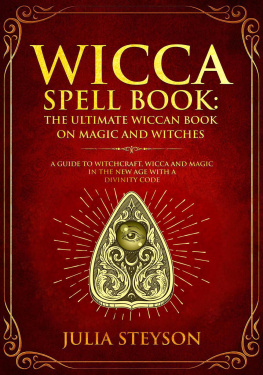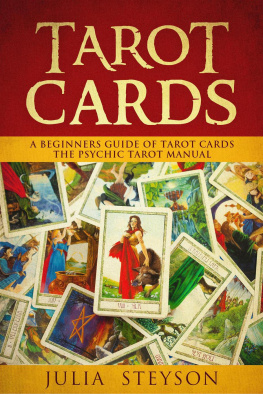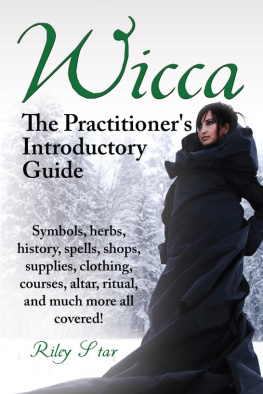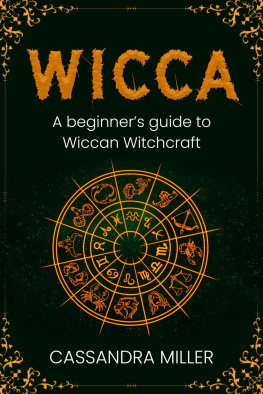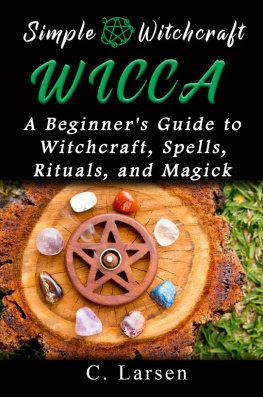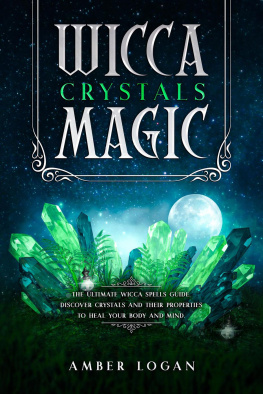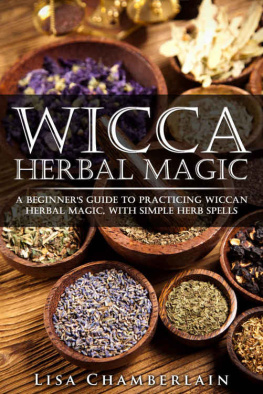Wicca Spell Book:
The Ultimate Wiccan Book On Magic And Witches
A Guide To Witchcraft, Wicca And Magic In The New Age With A Divinity Code
Julia Steyson
2018
COPYRIGHT
Wicca Spell Book: The Ultimate Wiccan Book On Magic And Witches A Guide To Witchcraft, Wicca And Magic In The New Age With A Divinity Code
By Julia Steyson
Copyright @2018 By Julia Steyson
All Rights Reserved.
The following eBook is reproduced below with the goal of providing information that is as accurate and as reliable as possible. Regardless, purchasing this eBook can be seen as consent to the fact that both the publisher and the author of this book are in no way experts on the topics discussed within, and that any recommendations or suggestions made herein are for entertainment purposes only. Professionals should be consulted as needed before undertaking any of the action endorsed herein.
This declaration is deemed fair and valid by both the American Bar Association and the Committee of Publishers Association and is legally binding throughout the United States.
Furthermore, the transmission, duplication or reproduction of any of the following work, including precise information, will be considered an illegal act, irrespective whether it is done electronically or in print. The legality extends to creating a secondary or tertiary copy of the work or a recorded copy and is only allowed with express written consent of the Publisher. All additional rights are reserved.
The information in the following pages is broadly considered to be a truthful and accurate account of facts, and as such any inattention, use or misuse of the information in question by the reader will render any resulting actions solely under their purview. There are no scenarios in which the publisher or the original author of this work can be in any fashion deemed liable for any hardship or damages that may befall them after undertaking information described herein.
Additionally, the information found on the following pages is intended for informational purposes only and should thus be considered, universal. As befitting its nature, the information presented is without assurance regarding its continued validity or interim quality. Trademarks that mentioned are done without written consent and can in no way be considered an endorsement from the trademark holder.
Table of Contents
Chapter 1: The Origins of Wicca

W itches. Flying on broomsticks, wearing all black, huddled over cauldrons. Our pop culture idea of witches is full of images like that: green skin, a warted long nose. But as we grow older and wiser, we come to learn that witches are not as we have learned in our childhoods. While these tales may be good for entertainment, there is a rich spiritual history behind Witchcraft that is missed by these caricatures.
It is common and psychologically normal for people to fear what they dont understand. Our society has feared witches for centuries. Hundreds or even thousands of witches were killed in
The Inquisition, witch hunts, and crusades. So much has been lost in the confusion that many people couldnt even begin to tell you what a witch is, or what witches believe and practice.
Today our society copes with the fear of that unknown by making a gentle mockery of a beautiful ancient tradition called Wicca. In this book, geared towards absolute beginners, we will hopefully shed some light on The Old Religion and its adherents.
The goal of this book is not only to educate, but to inspire. Even if you dont leave this book practicing Wicca, the hope is that you will find an understanding with those who do practice, and maybe also find a deeper appreciation for nature along the way.
However, this book serves not only as an educational guide for the curious, but can be used as an instructional how-to-begin for those who are interested in beginning their Wiccan journey. Simple explanations about holidays and beliefs are given, and the later chapters directly address how to begin practice, while the early chapters are more for educational purposes.
There are more than a few rich traditions that fall under the umbrella of the term Wicca. In this chapter we will discuss the founding of Wicca, the influences on the religion, how Wicca is distinct from Paganism, and what the Wiccan ties are to magic. This chapter will also take a look at the different traditions of Wicca that have developed over time.
W icca is actually a modern religion, with fairly recent roots, though it was not originally referred to as Wicca. The birth of what we know as Wicca traces back to 19th century Britain, which was in the midst of an occult revival movement.
Gerald Brousseau Gardner (1884-1964) is often credited with founding in the 1920s what would expand into Wicca in the 1960s. Gardener studied the anthropological theory by Margaret Murray. This theory posited that an ancient pagan religion had been practiced during the rise and spread of Christianity in Europe. Murray called this religion a witch cult and postulated that those who practiced it did so in 13-person covens. Murray also wrote that they worshipped a horned god.
In the early 1940s, Gardeners extensive study of Murrays work as well as his deep interest in other authors who specialized in the Occult, inspired him to start his own coven. This was known by its members as the Bricket Wood coven.
In the beginning, around the 1920s-1950s before the term Wicca evolved with the New Age movement, they called it The Craft or The Old Religion. Gardner expanded the religion to include worship of a goddess and the Divine Feminine, along with elements of things he had learned from freemasons and ceremonial magic. We will discuss magic and its place in Wicca more later in the chapter.
Gardner became friends with another early influencer of Wicca in 1947, Aleister Crowley (1875-1947). Crowley was known far and wide for his writings on the occult that were based on his personal experiences participating in a wide range of esoteric religious traditions throughout his life. He travelled around the globe learning about Buddhism, Kabbalah (Jewish Mysticism, astrology, Tarot, and Hindu practices as well.
Crowley is credited with being the first to distinguish magick with a k from magic. This was done so that there would be a specific word to differentiate his own religious practices from ceremonial magic, and stage magic that was popular during that time. Gardner adopted many rituals developed by Crowley.
Next page
